How to properly prune raspberries in summer in July to have a good harvest
Berry bushes are considered unpretentious plants, and some summer residents think that there is no need to care for them. Raspberries grow very quickly. Shoots that extend from the root draw juices from the bush, thicken the planting. In the thickets, the ovary is poorly laid, but the fungi that cause raspberry diseases are activated. Pruning old thorny branches in summer helps to strengthen young shoots, helps them survive the cold. After the procedure, the berries are easier to pick.
Why prune raspberries?
Gardeners who have been growing shrubs for more than one year argue that it is necessary to remove excess branches, but this must be done correctly.
To stimulate yields
The shoots formed on raspberries in the first season do not produce berries. In almost all varieties of culture, the buds that give flowers are laid on 2-year-old shoots. After fruiting, they die off, but new stems that grow from the root come to replace. If you cut out obsolete branches in a timely manner, next year the young shoots will give large berries.
Prevention of insects and diseases
If you leave all the young branches, the plantings of raspberries thicken, the ventilation of the plants is disturbed, the rays of the sun cannot break through the thickets. Favorable conditions arise for the reproduction of fungi, pests start.
Pruning raspberries after fruiting helps to avoid thickening, prevents the activation of pathogenic microorganisms that cause:
- mosaic;
- anthracnose;
- curly leaves;
- powdery mildew.
Removing the old 2-year-old shoots makes picking berries easier and improves their taste. Fruits ripening in the sun take on sweetness. Plant diseases are less common.

Forming the correct bushes
After pruning, raspberries look attractive, there are fewer thorny branches, and young stems develop better, gain strength to survive the cold season. The correct formation of bushes contributes to the growth of yields.
Optimal timing of the procedure (table)
You can prune raspberries in any season, except for winter, for the first time the stem of the plant is shortened when planting in the ground. The work is completed no later than a month before the onset of frost.

In the spring
When cultivating berry bushes, you need to adhere to the rules of agricultural technology, which help to preserve the characteristics of the variety, to accelerate the development of shoots. In early spring, when the snow has just melted, all branches look the same. The best time for pruning is determined by the condition of the kidneys. If they swell and try to open up, it's time to get started. The tops of the shoots are shortened to different heights, which makes it possible to lengthen fruiting.
Summer
Trimming raspberries once is not enough to harvest great berry yields. Thinning of shoots occurs in June. As soon as July has arrived, the dead branches are removed. In August, the number of young shoots is normalized.
In autumn
The region where the raspberry grows affects the pruning time. After picking berries, the bushes are attacked by parasites. Insects settle in old branches, therefore, dried shoots are burned. To have a good harvest, you need to learn when and how to prune raspberries in the fall.
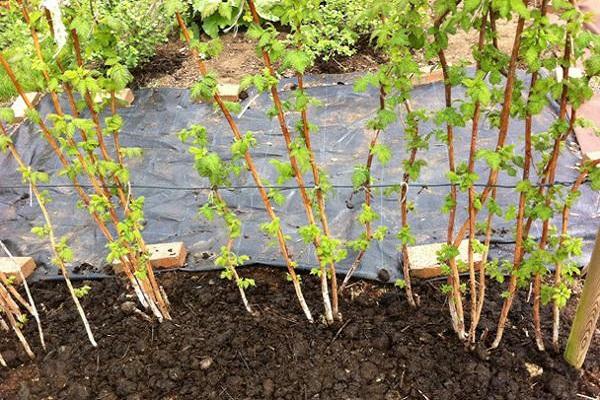
The bushes will have time to stock up on nutrients if they are shortened not just before the frost.
Using the table, it is easy to determine the optimal timing of autumn work.
| Territory of Russia | Pruning month |
| Southern regions | From 15.07 to 15.10 |
| Middle lane | 11 .08 to 20.10 |
| Siberia, Ural | All August |
The shortening of the shoots of remontant raspberries is carried out in October, but it should remain at least 3 weeks until the moment when autumn ends, winter comes.
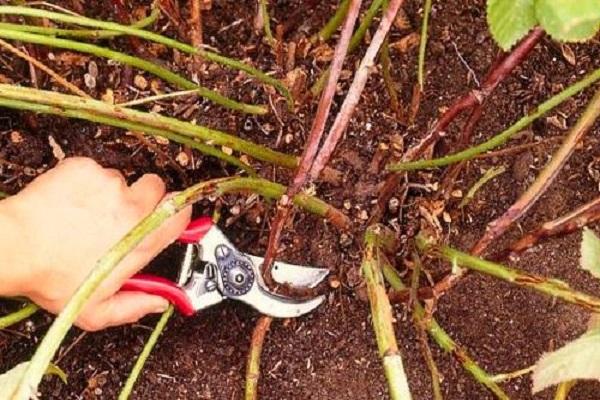
What tools are needed to carry out the work
The equipment that is used to trim raspberries must be disinfected in advance, otherwise an infectious disease can be transmitted through individual parts. To carry out garden work you will need:
- Pruner or special scissors. With the help of the tool it is convenient to deal with undergrowth.
- Lopper. Suitable for shortening thick stems.
- Knife. Allows you to correct irregularities.
Fallen leaves, dry shoots are raked with a rake. Alcohol, kerosene, vodka, potassium permanganate solution are suitable for disinfecting inventory.
Raspberry pruning methods
Varieties of berry bushes have different resistance to frost, produce and grow unevenly. If no pruning was performed in the summer, all work begins in the fall and for ordinary raspberries includes the removal of:

- under the root;
- biennial shoots;
- broken and sore stems;
- damaged branches.
Young shoots are thinning out. Besides simple pruning, other bush shaping methods are used. When shortening the shoots of semi-renovated strawberries, its characteristics must be taken into account.
The specifics of double and triple trim
To significantly increase the yield of berry crops in mid-latitudes, gardeners use the Sobolev method. At the end of spring, stems 80 cm high are shortened by 10 cm. The method helps to enhance the development of lateral shoots, stopping the growth of the top. By autumn, 8 branches appear on the bush, which are covered with spruce branches for the winter. When the next spring comes, young side shoots, the height of which reaches 0.5 m, need to be pruned by 15 cm.

When using the Sobolev method, raspberries turn into a remontant variety, pleases with berries until the end of September.
Experienced gardeners shorten, remove dried shoots in spring, summer, and autumn, using the triple pruning method. By the end of the next growing season, raspberry stalks aged 2 years are removed and the rest of the growth is thinned out.
Biological features of raspberry pruning after fruiting
If you shorten the branches, having finished picking berries, they manage to get stronger before frost. By this time, old shoots die off, and they must be removed so that pests do not start in the bark, and spores of fungi that cause more than one disease do not remain hibernating. A raspberry bush over the summer appears about 20 young branches, of which half are left.
Step-by-step pruning technology
After picking the berries, each plant should be examined to identify damaged and dead shoots that should not be left behind.

Common varieties of raspberries
Before the procedure, you must carefully sharpen the secateurs so that the wound is small. After disinfecting the instrument:
- Broken and diseased branches are removed.
- Get rid of weak shoots that cannot withstand frost.
- 2-year-old stems are cut so that they do not shade the young growth.
- Thinning thickened plantings, pulling out weeds, cutting down excess bushes to the surface level, digging in the soil.
After the autumn or summer pruning, common raspberry varieties are advised to be fertilized with wood ash and treated with iron vitriol. In Siberia and the Urals, young branches are bent to the ground for the winter and covered with spunbond or spruce branches, old shoots are burned.

Cutting the remontant raspberry
Many gardeners grow berry bushes that give not one, but several harvests per season, and the fruits are tied even on annual stems. In the southern regions, repair raspberries are cut in autumn, in mid-latitudes in spring.
When growing a crop for one harvest after the onset of frost, the bushes are shortened at the root. The procedure should not be carried out earlier, otherwise the young shoots will sprout and the raspberries will die.
To obtain 2 harvests, the work is performed in 2 stages. After collecting the first berries, two-year-old shoots are cut under the root, on which there were fruits. In autumn, dry, weak and diseased branches are removed and burned, the bushes are fed.

The Cumberland raspberry, which has a black color, grows very quickly. To increase its productivity, at the end of June, the stems of 2 meters in height are shortened by 20 cm, and young shoots are cut off at the point of growth.
In October or November, when the shrub goes into a dormant period:
- Remove problematic branches.
- Get rid of weak stems pointing inward of the raspberry.
- Long shoots are shortened by a third.
- Two-year-old shoots are cut to the ground.
Next year, raspberries will be laid on the side branches. Cumberland produces a large number of large fruits for a long time, if you leave up to 12 shoots.

The nuances of pruning varieties that give one crop
To ensure normal lighting of the bushes, to prevent the activation of pests, both fungi, and viruses, on ordinary plant varieties that bear fruit once a season, during pruning:
- Sick and dried branches are removed with pruning shears.
- Annual shoots are thinned out, leaving no more than 8 pieces on the bush.
- The stems are shortened by ¼ so that their height is up to 1.5 meters.
Raspberries will bear fruit longer if in the spring the branches are divided into 4 parts, the first are cut by 15 cm, the second - by 20, the third - by half, the latter are removed to the hemp.

How to care for and how to feed bushes after pruning
Regardless of when the work on thinning and shortening shoots is carried out, the raspberries must be thoroughly watered. Caring for conventional and remontant plant varieties after pruning includes feeding with organic matter or mineral fertilizers. Poultry droppings are dissolved in water using a ratio of 1 to 30. Manure is applied to the ground, per 1 square meter. meter is taken 6 kg. To increase the yield, the soil is diluted with peat.
If pruning is done in the fall, the raspberries will need micronutrients. The bushes are fertilized with a complex containing phosphorus and potassium. Repaired varieties are fed with Bordeaux liquid. When the moisture is absorbed after watering, the soil in the planting is sprinkled with a thick layer of mulch. In regions where winters are harsh, raspberry shoots are tied and bent down, covered with a thick layer of leaves, a film is placed on top, in which holes are pierced.

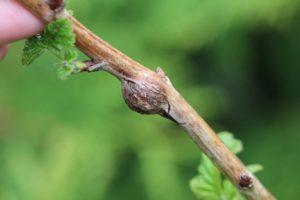

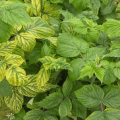
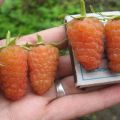
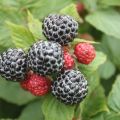

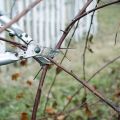
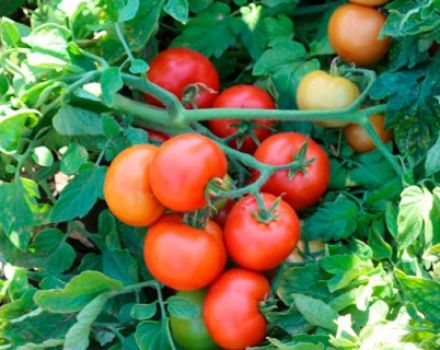

The article is rich in material and written by a professional. From my own practice, I can say that for myself I have defined several rules for growing raspberries.
I cut off: stems that have fallen to the ground and 2-year-old stems that bear fruit,
affected by a tick.
Be sure to clean the aisles and cover them with agricultural canvas. Row spacing should be well ventilated and allow for sunlight
freely penetrate to plants.
More often than not, I feed raspberries with chicken droppings, as in article 1:30.
The result is always good.
I wish you good harvests.